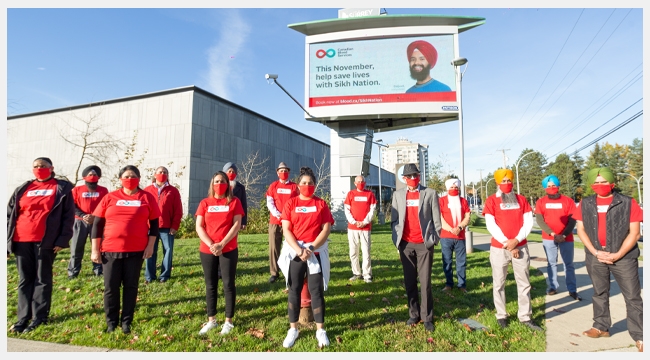Canadian father advocates for new hemophilia treatment

A father advocates for a new hemophilia drug that could help his children. At the same time, we initiate the process for a drug to be included in our formulary.
Ten-year-old Declan McNeely loves soccer, video games and brain teasers. His brother, Tristan, aged seven, likes to ride his motorized four-wheeler near their Prince Edward Island home, picking up litter and doing odd jobs for neighbours. But until recently, childhood has been anything but carefree for the boys and their family.
Declan was just eight months old when he suddenly developed a large bruise. His worried parents, Jenn and Donovan McNeely, took him to the hospital and received a life-changing diagnosis: Declan had hemophilia A, a severe form of the rare hereditary disorder that prevents blood from clotting properly.
When Tristan was born three years later, doctors found that he too had hemophilia A — and, like his brother, would require treatment for the rest of his life. (The boys’ sister has a milder form of the disorder.)
Treating hemophilia
Children with hemophilia can’t receive medication in their first year, as they often have negative reactions or develop “inhibitors,” immune system responses that make medications ineffective later in life. At a year old, they begin regular prophylaxis — preventative intravenous treatments usually administered three times a week.
To avoid constant hospital visits, Jenn and Donovan decided to deliver the medication themselves at home. Hoping to avoid injections, they arranged for each boy to have a port-a-cath, a small medical appliance inserted under the skin and connected by a catheter to a vein.
Unfortunately, the devices proved to be problematic, and both Tristan and Declan became increasingly anxious over their treatments.
Their parents decided to have the port-a-caths removed and switch to direct intravenous injections. But the boys’ anxiety only grew worse, amplified by a deep fear of needles — to the point where Tristan had to be taken to the hospital and sedated for every shot.
“We could tell it was consuming his life,” Donovan recalls. “Every moment, he was worrying about his next treatment. He had a lot of trauma.”
The constant stress was affecting the entire family, with no solution in sight. And then an unexpected piece of news brought hope. At a meeting of the local chapter of the Canadian Hemophilia Society, a pharmaceutical company representative described the promising results among hemophilia A patients taking a new drug called Hemlibra®.
Hemlibra® is one of a number of medications called plasma protein and related products. Some of these medications are made from proteins found in human plasma, the straw-coloured component of blood that makes up most of its volume. Others, including Hemlibra®, are made from alternative proteins and molecules created in a laboratory. Through DNA technology, some human proteins are copied, and other molecules are designed to function like human proteins.
Patients rely on plasma and plasma protein related products (PPRPs) to survive and improve their lives, which is why Canadian Blood Services is so dedicated to increasing our domestic supply of plasma.
PLASMA DONORS SAVE LIVES
The positives of Hemlibra®
The key benefit of Hemlibra® (the trade name for the drug emicizumab) is ease of treatment. Shots are subcutaneous, requiring just a quick pinch lasting a few seconds instead of an intravenous injection that can take 10 to 15 minutes to administer.
Equally welcome news, especially for young patients, is the frequency of treatment — shots are every two to three weeks rather than every other day.
Excited to learn of a drug that could make his sons’ lives so much easier, Donovan researched Hemlibra® further and found it was already being widely prescribed in several countries, including the U.S. Joining other concerned members of the Canadian Hemophilia Society, he began advocating for approval of the drug in Canada.
He called ministers of health, wrote to elected officials, signed petitions, reached out via social media, shared his family’s plight with news outlets — in short, Donovan pursued every avenue he could, determined to help secure this welcome alternative for all those who had to endure the same traumatic treatment regimen as his boys.
‘I’m so much happier now’
In October 2021, Hemlibra® was approved for inclusion (or, more accurately, for expanded use — see Part II in our 2021-2022 annual report) in the national formulary of plasma protein and related products operated by Canadian Blood Services. The McNeelys welcomed the good news, although Donovan remains frustrated by a process that he feels is overly complicated and too slow.
What helps ease that frustration, however, is seeing his sons’ lives transformed. Leaving constant anxiety behind, the family enjoys a more balanced, active life in which the boys are far less constrained by their hemophilia.
“I’m so much happier now with Hemlibra®,” Declan says. “I really like that I don’t have to do it three times a week. And it’s better because I feel like I can do more stuff.”
As for Tristan — who was able to transition to the new drug even sooner, thanks to a “compassionate use” allowance for patients in special circumstances — the positive change in his mental health has been a huge relief for the whole family. As the seven-year-old happily declared to his father: “Dad, I’m a whole new man.”
This is part I of a two-part story featured in our 2021–2022 annual report titled How We Connect. You can read part II here, which details the rigorous process by which new medications are added to our formulary.


